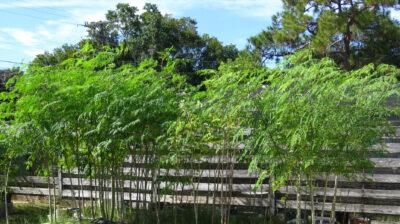
image credit Wikihow.com
Superfoods. Sure, we all know that we should be adding them to our daily diets for optimal health. But with seemingly “new and improved” superfood products hitting the market all the time, how are you to know which ones are legitimately super? In other words, what’s real and what’s just hype?
There’s a new superfood in town, and it seems to be more than just hype. This superfood is turning out to be the real deal. It’s so remarkable that its nickname is “the miracle tree.”
We’re talking about the Moringa tree, to be exact. This amazing, versatile little tree has been making headlines recently, and for good reason.
Moringa, a superfood taken from the Moringa tree, is turning out to be quite an exciting prospect as an all-natural superfood. What’s so great about it? Moringa contains the anti-aging nutrient zeatin, and other natural compounds that help prevent cancers. There is even exciting evidence that Moringa may even stoptumor growth. While there is still plenty of research to do on the cancer-fighting powers of Moringa, clinical trials have been very promising.
 |
| Growing Moringa Plantin a Pot |
Most practically, Moringa is packed full of vital nutrients and protein. The leaves of the Moringa tree are said to pack a nutritional punch. They have more iron than spinach, more vitamin A than carrots, and more calcium than milk. And if that isn’t enough to blow your mind, the leaves also contain more vitamin C than oranges and more potassium than bananas, making Moringa a healthy dietary protein comparable to milk or eggs.
Natural health practitioners and advocates love Moringa and believe it can help lower blood pressure naturally, improve digestion, and help boost the immune system, as well as raise energy levels. Best of all, there seem to be no side effects to using Moringa liberally in the diet.
Superfood or not, Moringa has history on its side. Moringa was used by the ancient Egyptians, Greeks and Romans for both medicinal and culinary purposes. Moringa was originally cultivated in Northern Africa and in India as a food crop for both humans and cattle. But slowly, over time, the popularity of the Moringa tree has spread and it is now being grown all over the globe for many diverse reasons.
If you’re a survival gardener, or you like edible landscaping, you should probably be growing Moringa.
Moringa is versatile – it’s fast growing, edible and nutritious, and it’s also a beautiful tree to look at. It can be grown year-round in warm and tropical climates, and can be successfully grown as an annual in more temperate zones. So, it’s no wonder that Moringa is gaining popularity with survival gardeners.
Want to grow Moringa? Here are some tips on getting started.
- Pick a good location. Moringa trees grow quickly. They can grow over 20 feet tall in just their first year alone. Average growth is approximately 15 feet, but in optimal conditions, they can grow much taller in short time periods. You will need to plant your Moringa trees away from existing structures as the branches can get four feet wide in the first year. If you’re growing Moringa as an annual, you can grow a hedge of Moringa. You will want to keep the trees pinched back from the very start, to allow them to grow more like a bush and less like a tree. So, choose your location wisely based on your long-term needs and growing conditions.
- Sunlight is key. Moringa trees are tropical trees, so they need a lot of sunlight. Make sure you plant them in an area where they will receive optimal sunlight. Warmth is important, too. Moringa trees can tolerate drought conditions, but they cannot tolerate the cold, and freezing temperatures will cause them to die.
- Plant in healthy, rich soil. Moringa trees do not grow well in heavy, thick or clay soils. And, they do not like to have wet roots. Make sure your soil is rich and drains well. You can add compost and sand to your to soil to loosen it up and boost the quality, if necessary.
- Plant so that the tap root has plenty of room to grow downward. If you are using containers to grow your Moringa trees, make sure to find the deepest container possible.
- The more you prune them, the faster they will grow. This is good to know, especially if you will be growing your Moringa trees in rows, or as a hedge. If you’ll be allowing one Moringa tree to grow to its full potential, make sure to give it plenty of room to spread out and prune wisely. If you will be growing them as a hedge, make sure to prune them very regularly and keep them pinched back.
Eating Moringa – Raw or Cooked
The leaves, pods, flowers, buds, blossoms and seeds of the Moringa tree are all edible. However, you should not eat the roots. The roots can be toxic, especially if eaten in large amounts. While the roots are eaten in some areas of the world, it is not recommended that you do so unless it is a true survival situation, and even then should only be done with extreme caution.
The leaves are the most popular edible part of the Moringa tree. They can be eaten raw, directly right off the tree. Use Moringa leaves in your diet as you would any other fresh greens.

Great information
ReplyDeleteThis comment has been removed by the author.
ReplyDelete